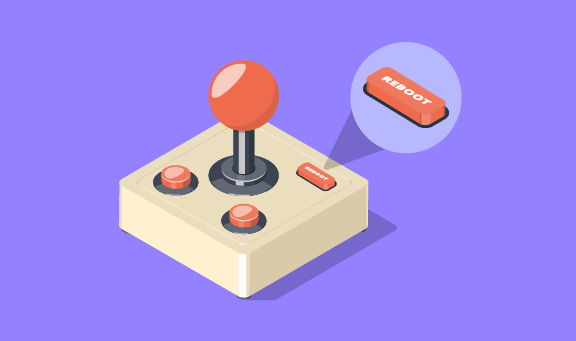Time to reboot the gamification of recruitment

It’s safe to assume that Casey Wardynski didn’t foresee the scale of what he was starting back in 1999. As chief economist of the U.S. Army, he was looking for ways to broaden the recruiting base for the armed forces when he turned to gaming technology.
The colonel’s team came up with America’s Army, the first military-developed video game. Aimed at young teenagers, the object of the game was to collect “honor” points and those patient enough to work their way through compulsory medical training were then let loose with digital Humvees, grenade launchers and heavy machine guns.
The free game, which was designed as a way of hooking interested future candidates, spent six years from its release in 2002 among the 10 most popular games in the world. It also persuaded practically every large organization to pay attention, and at least a little lip service, to gamification of their recruiting process.
Wardynski might crack a wry smile to be thought of as the father of Multipoly Next, a recent creation of the Hungarian division of big four auditor, PwC. Instead of staunching bleeding or driving armored personnel carriers, players complete auditing tasks, decide on schedule priorities and perform exercises meant to “build business acumen.” To be fair to Multipoly, it’s meant to snag methodical graduates rather than gung-ho 13 year olds.
The runaway success of America’s Army — which is now coming up on its 50th version — made gamification fashionable and spawned an avalanche of copy-cat games.
By the time someone decided to cross-breed recruitment and entertainment and coin the awful term “recruitainment” it should have served as a warning. The clumsy descriptor was applied to processes that can be challenging, educational and, sadly too rarely, fun. Predictably, gamification has been more hyped than it has been effective.
Gamification, now a buzzword across almost every industry, involves the application of gaming science and behavioral psychology to incentivize people behave in a certain way, whether they are job seekers, employees or customers.
Can we apply gamification to recruitment?
By 2015 US companies were spending $522m dollars a year on gamifying their recruitment and other HR activities. The projected value of the entire worldwide consumer and enterprise gamification industry is expected to reach $5.5bn by 2018 and rise to $11bn by 2020.
Despite these bullish figures the industry is still haunted by an earlier report from Gartner, a U.S.-based research and advisory firm. The study found that while 70 percent of global organizations would have at least one gamified application eight out of ten of them would fail. “Gamification is near the peak of Gartner Hype Cycles and like most new trends and technologies,” Gartner’s Brian Burke wrote back in 2013. “The initial hype surrounding the trend creates unrealistic expectations for success and many poor implementations follow. Like any new trend, gamification will move through the hype cycle from the peak of inflated expectations into the trough of disillusionment.”
The relatively sudden transformation of HR and recruitment professionals into eager but inexperienced game designers had predictable results. Many enterprises decided that it was enough to deploy some badges and leaderboards on their career sites and qualified candidates would flock in. This is not what happened. Instead, the early rush to gamification in recruiting and beyond resulted in some epic fails. Even Google managed to get it wrong when it tried to gamify its news section, offering readers up to 50 different kinds of badges to show off what they had been reading. The idea was quietly “retired” about one year later.
Some experts are wary of using games as recruiting tools altogether. Will job seekers take the games seriously enough, they ask, or worse, form the impression that a company requires future hires to clear arbitrary obstacles to get a job.
“When you apply for a job, that’s a pretty high-stakes situation,” Jan Plass, a professor of digital media at New York University’s Steinhardt School told the Wall Street Journal. It is “potentially very confusing” for candidates to find themselves confronted with games which are inherently fun.
Not everyone finds mixing fun with meaningful action so problematic. In fact the two most common causes of failure in the hiring domain are games which nobody wants to play, and poorly thought out gamification elements that reward the wrong behaviors.
Marriott, a hotel chain, ran into the first of these issues when it tried to ape the popular social media game, Farmville, and shift it to a hotel context. My Marriott Hotel Facebook game largely sank without trace, according to Mashable, despite the high production values people didn’t want to play.
For the second type of failure U.S. Academics Rachel Callan, Kristina Bauer and Richard Landers looked at business scenarios and why their gamification led to unintended consequences. In one of their example scenarios a firm adds gamification elements to their application procedure — the most common flirtation with gamification in recruitment. Applicants sign into the site and earn points and badges for visiting different parts of the careers site and completing the application. The points are not related to the candidate’s likelihood of getting the job but used as a way to keep them interested and track their own progress. The problem, as the authors explain, is that the approach to rewards does not match the organization’s goal, which is for candidates to learn more about the firm before deciding to apply, i.e. to self select whether they are a good fit for its activities and culture. The behavior that is rewarded is simple exploration, with the user incentivized to click as many links as possible.
Just as there are two main causes of failure there are two developments that suggest better outcomes from gamification of recruiting in the future.
The first is generational. No, gaming has not just been discovered and yes, it has been popular for a long time. But gaming is now a regular activity for at least two people in the average U.S. household. And as its popularity increases, the cohort of gamers has matured into decision-making positions. The average age of gamers is now 31, according to the Entertainment Software Association, and there are more gamers over 35 than there are between the ages of 18 and 35.
This generation is more likely to understand the dynamics of game design and gamification and apply them more effectively. The over reliance on what behaviorists call the “reward schedule” — where users are set up to expect continual rewards for continued engagement — is giving way to more meaningful gamification. “Getting a good score is just one reason people play games,” said Scott Nicholson, director of the Because Play Matters lab and associate professor at Syracuse University. “Players engage with games for an exploration of narrative, to make interesting decisions, and to play with other people.”
A more sophisticated approach to gamification based on neuroscience has spawned startups like Knack, which designs games that connect candidates and employers in ways more similar to psychometric testing. Their apps mine data from job seekers while helping them understand what they do best. This way candidates can be linked to suitable job opportunities and career paths.
The second aspect of generational change reinforces the need for this approach as social gamers come of age in the labor market. Tamer Rafla, CEO of the gamification outfit, Klujo, argues that “traditional ‘push’ recruitment strategies aren’t as effective with the younger generations. Millennials are hanging out on social channels playing games and building their digital footprint — not looking for jobs.”
Corporations will argue that big in-house productions like PwC’s Multipoly work. Since introducing the game, PwC told Forbes that its job candidate pool had grown 190 percent and the users’ interest in learning more about working at PwC increased by 78 percent.
For those without the budgets of the U.S. Army or a big four accounting firm, gamification specialists offering access to qualified candidates already assessed through social games represents a better approach than formulaic badges and leaderboards careers pages.
An even more alluring prospect held out by next generation gamification of recruiting is that it might help crack the diversity challenge and help businesses identify unconventional talent.
Deloitte partnered with Arctic Shores to create a game, which is largely indistinguishable from any other smartphone gaming app. Only Firefly Freedom collects 3,000 data points and has been used to score candidates in a more wide-ranging way than would be possible with traditional interviews and evaluations.
One of the record scores came from a Deloitte work experience program for candidates from less privileged backgrounds. “This is exactly the sort of person we hoped the game would help us identify,” said Rob Fryer, head of student recruitment at Deloitte. “The old recruitment process would have been less suited to this person, but they possess the skills Deloitte needs.”




